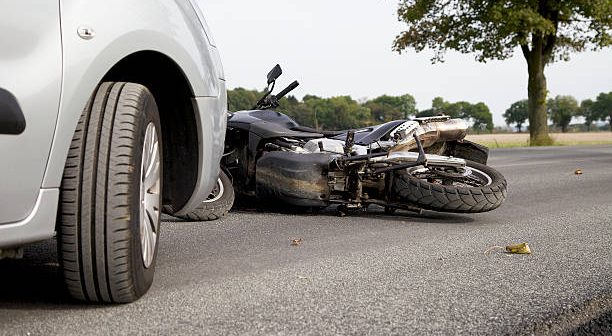Two-wheelers, encompassing motorcycles, scooters, and mopeds, are the lifeblood of transportation for millions in India. Affordable, convenient, and offering some relief from traffic congestion, they have become an indispensable part of daily life. However, this convenience comes at a steep price – a rising tide of accidents that claim countless lives every year.
A Grim Reality: Statistics Paint a Worrying Picture
Data from the Ministry of Road Transport and Highways paints a concerning picture. In 2020, two-wheelers accounted for a staggering 37% of all road fatalities in India, translating to over 1 lakh (100,000) deaths [Ministry of Road Transport and Highways]. This number is significantly higher than the global average of 23% according to the World Health Organization (WHO) [World Health Organization].
The problem is not static. Reports suggest a steady rise in two-wheeler accidents year after year. This alarming trend demands immediate attention and a multi-pronged approach to curb the carnage on Indian roads.
Unveiling the Causes: A Complex Web of Factors
Several factors contribute to the high incidence of two-wheeler accidents in India. Here’s a closer look at some of the most prominent:
- Reckless Driving and Traffic Violations: Traffic indiscipline is rampant in India. Speeding, jumping red lights, lane weaving, and riding without helmets are common occurrences. Two-wheeler riders, often young and inexperienced, are particularly vulnerable to accidents due to these reckless behaviors.
- Poor Road Infrastructure: Many Indian roads are riddled with potholes, uneven surfaces, and lack of proper signage. This creates a treacherous environment for two-wheeler riders, increasing the risk of losing control of their vehicles.
- Inadequate Traffic Management: Enforcing traffic rules is a major challenge. The shortage of traffic police personnel and weak implementation of penalties contribute to a lax enforcement environment, emboldening reckless behavior.
- Drunk Driving: Driving under the influence of alcohol significantly impairs a rider’s judgment and reaction time, drastically increasing the risk of accidents. While enforcement efforts are increasing, drunk driving remains a significant concern.
- Overloading and Tripple Riding: Two-wheelers are often overloaded with passengers and cargo, exceeding their carrying capacity. This throws off balance and stability, making accidents more likely. Tripple riding, a common practice, is particularly dangerous as it leaves no room for error.
- Manufacturing Standards and Vehicle Maintenance: Concerns have been raised about the quality of some two-wheeler models, particularly low-cost options, which might have structural weaknesses or inadequate braking systems. Additionally, poor vehicle maintenance can lead to mechanical failures that contribute to accidents.
The Ripple Effect: Beyond the Loss of Life
The human cost of two-wheeler accidents is devastating. Families lose loved ones, children become orphans, and livelihoods are shattered. Beyond the immediate tragedy, accidents also place a significant burden on the healthcare system, straining resources needed for other critical treatments.
Economically, the loss of productivity due to injuries and deaths from two-wheeler accidents impacts the nation’s GDP. Furthermore, the cost of accident-related medical care creates a financial burden for families and the government.
A Call to Action: Steering Towards Safer Roads
Addressing this multifaceted issue requires a comprehensive strategy involving various stakeholders.
-
Government Initiatives: The government can play a pivotal role by:
- Strengthening Road Infrastructure: Investing in building and maintaining high-quality roads, improving signage, and creating dedicated two-wheeler lanes are crucial steps.
- Stricter Traffic Enforcement: Increasing traffic police presence, deploying technology like speed cameras, and implementing harsher penalties for violations are essential.
- Public Awareness Campaigns: Launching targeted campaigns to educate the public about safe riding practices, responsible traffic behavior, and the dangers of drunk driving can significantly impact behavior.
- Promoting Helmet Use: Enforcing mandatory helmet use for riders and pillion riders is critical. Government initiatives promoting high-quality, affordable helmets can encourage compliance.
- Vehicle Standards and Regulations: Implementing stricter safety standards for two-wheeler manufacturing and enforcing regular vehicle inspections can help reduce accidents due to mechanical failures.
-
Community Responsibility: Community leaders and NGOs can play a vital role by organizing road safety awareness workshops and promoting responsible driving practices within their communities.
-
- Individual Responsibility (continued):
- Always wearing a properly fitted helmet and ensuring pillion riders do the same.
- Following traffic rules strictly, including speed limits and lane discipline.
- Avoiding overloading and triple riding.
- Maintaining their vehicles regularly to ensure proper functioning of brakes, tires, and other critical components.
- Avoiding riding under the influence of alcohol or drugs.
- Opting for defensive driving techniques, anticipating potential hazards on the road.
Technological Solutions: The Road Ahead
Technology can be a powerful tool in curbing two-wheeler accidents.
- Smart Traffic Management Systems: Implementing intelligent traffic management systems can optimize traffic flow, reduce congestion, and enforce traffic rules more effectively.
- Advanced Driver Assistance Systems (ADAS): Encouraging the adoption of ADAS features like Anti-lock Braking Systems (ABS) and traction control in two-wheelers can significantly improve vehicle stability and control.
- Telematics and Connected Vehicles: Telematics solutions can provide real-time information on traffic conditions, potential hazards, and vehicle health, empowering riders to make informed decisions.
A Collective Effort for a Safer Future
The alarming rise of two-wheeler accidents in India demands a collective effort. The government, traffic authorities, manufacturers, civil society organizations, and individual riders all have a role to play. By implementing stricter regulations, investing in infrastructure, promoting public awareness, and adopting new technologies, significant progress can be made. Ultimately, a shift towards responsible riding practices and a commitment to safety from all stakeholders are essential to turn the tide and create safer roads for millions of two-wheeler riders in India.
- Individual Responsibility (continued):





